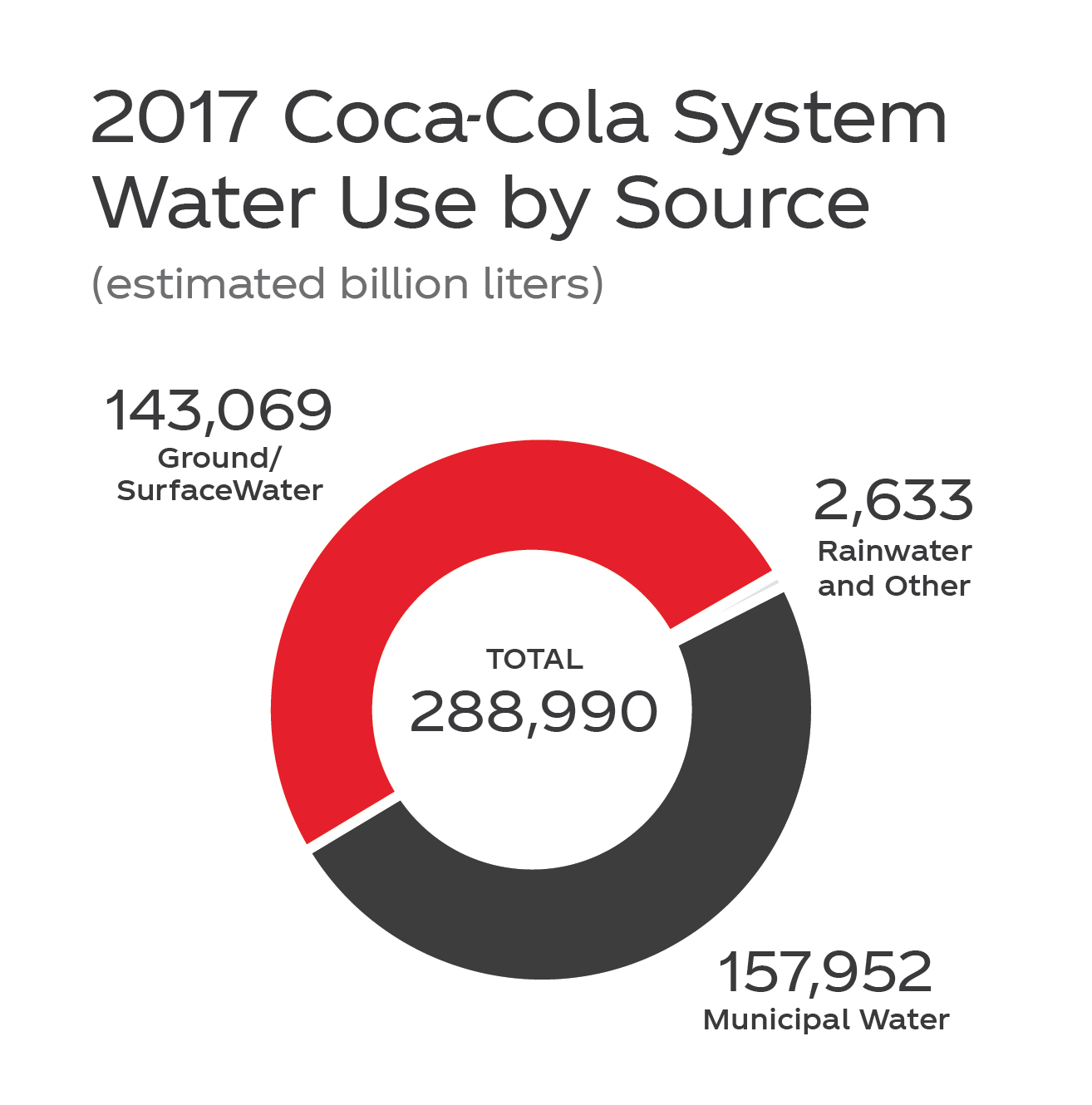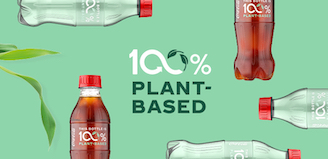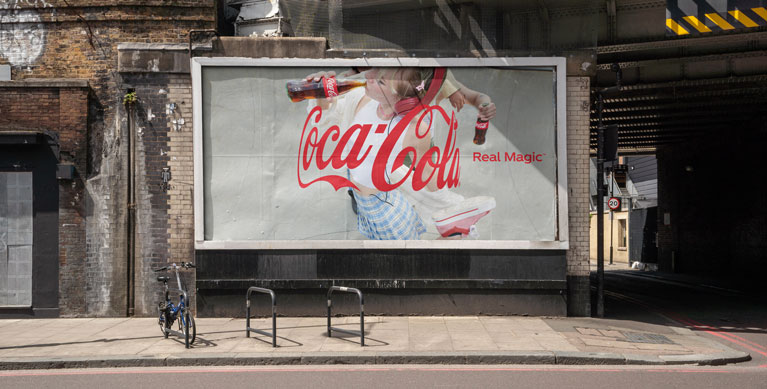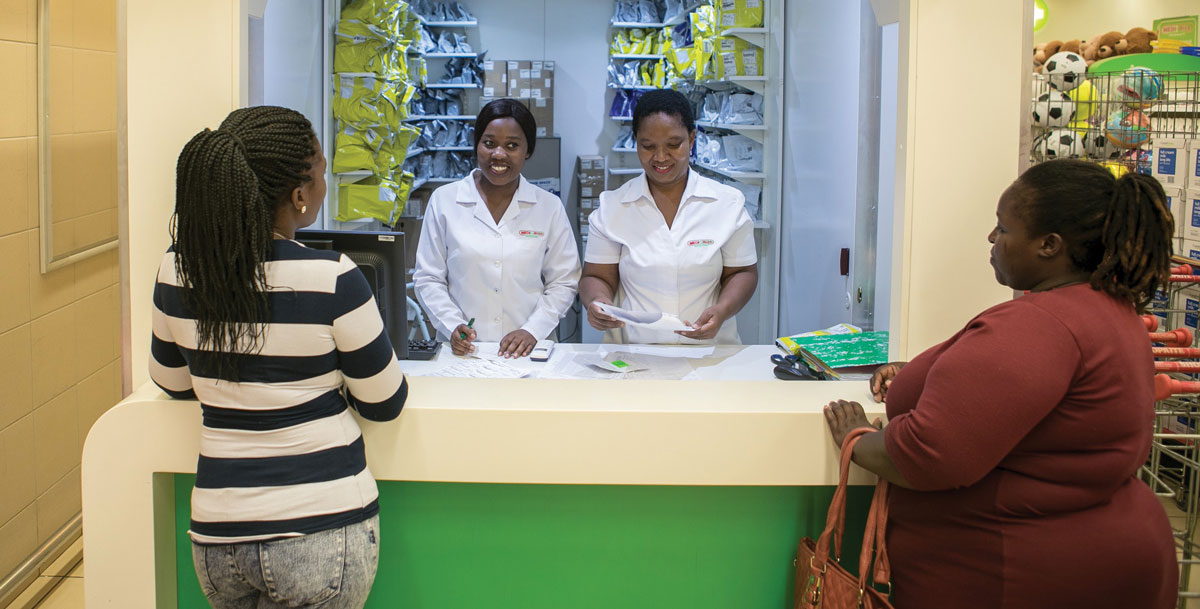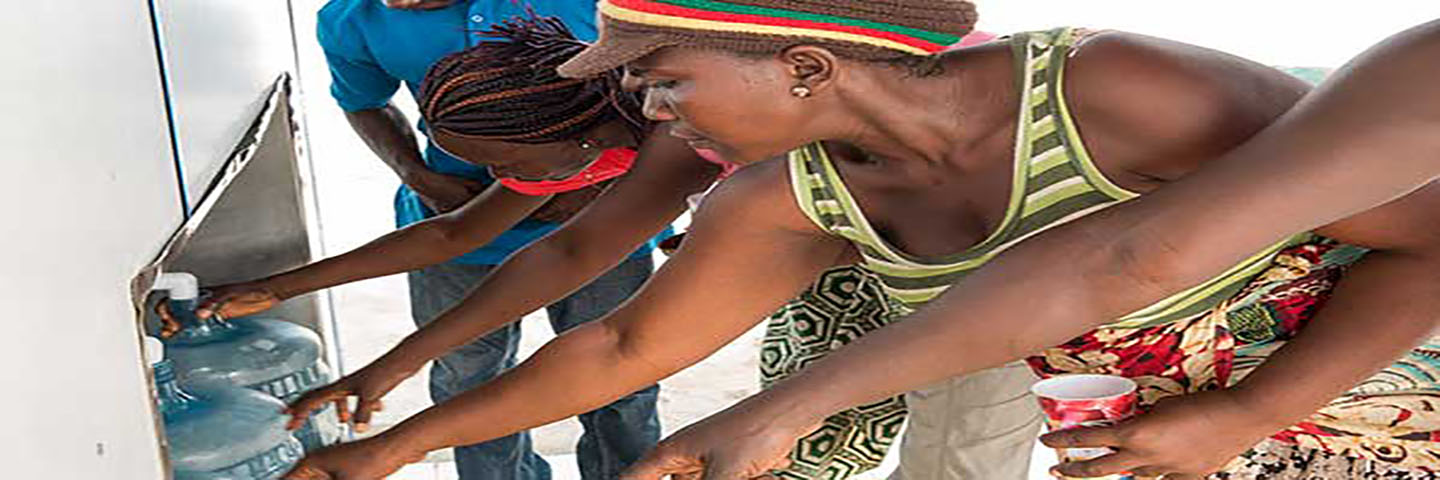
- Logo
- Our company
- Our brands
- Sustainability
- Social impact
- Careers
- News
- Investors
- Search
- Language
- Reciteme
Search

Collaborating to Replenish the Water We Use
The Importance of Partnership
08-29-2018
Goal:
By 2020, safely return to communities and nature an amount of water equal to what we use in our finished beverages.
Progress:
In 2017, we continued to replenish more than 100% of the water used in our finished beverages back to communities and nature, a goal we first met in 2015.
In 2017, the Coca‑Cola system (the Company and our bottling partners), continued to achieve our goal to replenish 100 percent of the water we use in our finished beverages back to communities and nature by 2020, a goal we first met five years early in 2015. Projects implemented by the end of 2017 are replenishing an estimated 248 billion liters per year through community and watershed projects globally, as estimated with the help of our many reputable partner organizations using peer reviewed scientific and technical methods.
Our diverse, locally focused community water projects often grow out of thesource water vulnerability assessments(SVA) conducted for each of our bottling plants. Source water protection plans(SWPP) are developed to address identified vulnerabilities in a given community and lead to many of our community water partnership projects. Many of the projects we support are in collaboration with local communities and governments and other respectedthird-partypartners. Pursuing these synergies among our source water protection and replenish programs enables us to identify and implement projects that support the sustainability of local watersheds and communities whilemitigating risks to our business.
The replenish projects we support are focused on
- helping provide access to safe water and improved sanitation (includes water collection and storage facilities, purification processes, and septic systems);
- protecting watersheds (includes conserving or restoring water quantity or quality); and
- providing water for productive use (includes projects such as rainwater harvesting or water for irrigation).
Our replenish projects are conducted with the expertise and support of many critical partners such asWorld Wildlife Fund (WWF), USAID, The Nature Conservancy, Water For People, Water and Sanitation for the Urban Poor (WSUP), Global Water Challenge, UN-HABITAT, and the United Nations Development Programme (UNDP).
Continuing to Replenish
Meeting our 2020 goal of replenishing the water we use doesn’t mean we consider our replenish work complete. We plan to continue to replenish the water we use over time—a complex and never-ending challenge.
Meeting our 2020 goal of replenishing the water we use doesn’t mean we consider our replenish work complete.
We will work to sustain our community water projects to ensure they continue to deliver the intended benefits to people and nature. We also may need to keep implementing new projects to maintain the level of replenishment as our business grows. And, sometimes we’ll initiate and engage in new replenish projects because it’s the right thing to do.
We invest in and support community water projects in countries and territories where there is demonstrated need and we have the resources and partnership opportunities to make a lasting impact. While we’ve realized our replenish goal, we don’t have projects active in every country where we operate, and we will continue to evaluate areas where new projects are needed. As circumstances change, we may start water projects in new areas, expanding our replenish efforts.
Quantifying Replenishment: An Evolving Methodology
The Nature Conservancy, with support from LimnoTech and the Global Environment &Technology Foundation, helped us develop methodologies to calculate the volume of water we have replenished using an approach based on widely accepted tools and methodologies.
Replenish projects are implemented in the areas where the need is greatest and we have the resources and partnership opportunities to make a lasting impact. They are not always to the aquifer from which the water was originally sourced—although many are. The projects are planned and implemented in partnership with governments, civil society and other members of the private sector. We only calculate replenishment credit for the portions of the project that are directly funded or instituted by the Coca‑Cola system. Replenish calculations may evolve over time as we gain experienced insights into project results and more companies embrace similar programs.
The water footprint of growing agricultural ingredients sourced by the Coca‑Colasystem is not included in our water replenishment goal. However, sustainable water practices are part of Coca‑Cola’s Sustainable Agriculture Guiding Principles required for suppliers
